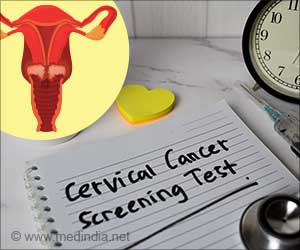Concentrations of the biomarkers CA125, human epididymis protein 4 (HE4), and mesothelin began to rise 3 years before clinical diagnosis of ovarian cancer, according to a new study
Concentrations of the biomarkers CA125, human epididymis protein 4 (HE4), and mesothelin began to rise 3 years before clinical diagnosis of ovarian cancer, according to a new study published online December 30 in the Journal of the National Cancer Institute. However, the biomarkers became substantially elevated only in the last year prior to diagnosis. The stage of the cancer at the time of marker elevation is not known.
CA125, HE4, mesothelin, B7-H4, decoy receptor 3, and spondin-2 have been identified as potential ovarian cancer biomarkers, but their behavior in the pre-diagnostic period, with the exception of CA125, has not been evaluated previously.In this study, Garnet L. Anderson, Ph.D., of the Division of Public Health Sciences at the Fred Hutchinson Cancer Research Center in Seattle, and colleagues analyzed stored serum samples from the Carotene and Retinol Efficacy Trial, a randomized, double-blind, placebo-controlled chemoprevention trial testing the effects of beta-carotene and retinol on lung cancer incidence among individuals at high risk for the disease. The researchers identified 34 patients who were diagnosed with ovarian cancer and had serum specimens available from the trial, as well as 70 matched control subjects.
Serum concentrations of CA125, HE4, and mesothelin began to increase slightly in cancer patients approximately 3 years before diagnosis but became substantially elevated only about a year before diagnosis.
These data suggest the presence of ovarian cancer up to 3 years before clinical diagnosis, but the likely lead time associated with these markers appears to be less than 1 year, according to the authors.
"Although these markers are not accurate enough to prompt early intervention in existing screening protocols, the multivariable regression analyses identified modest but statistically significant increases in risk associated with CA125, HE4, and mesothelin, which are consistent with many of the established epidemiological risk factors for ovarian cancer," the authors write.
In an accompanying editorial, Patricia Hartge, ScD, of the Division of Cancer Epidemiology and Genetics at the National Cancer Institute in Bethesda, Md., applauds the authors for taking the field one step closer to successful screening designs by showing that the levels of certain biomarkers do not increase early enough to be used for screening.
Advertisement
Source-Eurekalert
SRM















